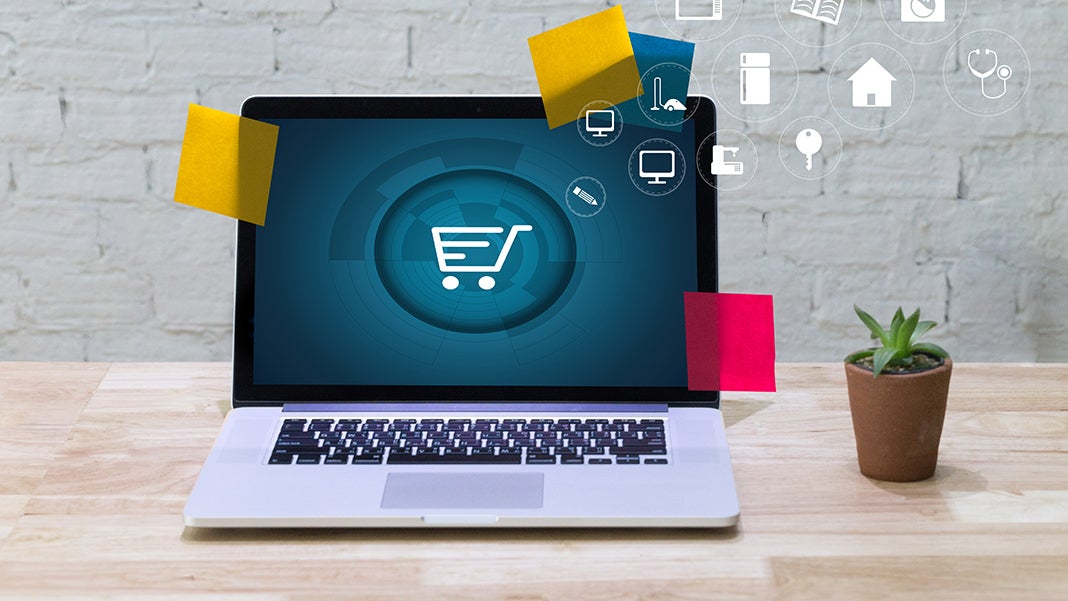BigCommerce Welcomes You: Navigating the Migration from WooCommerce
By: Luke Britton

WooCommerce has become the go-to ecommerce platform for small businesses and agencies. However, with the popularity of this open source solution comes a growing number of users looking to migrate their store from WooCommerce to BigCommerce. Migrations can be complicated because you’re moving from one platform to another, but it’s worth it. In this article, we’ll walk through how the migration from WooCommerce works and how it can help your business succeed on BigCommerce.
Understanding WooCommerce and BigCommerce
WooCommerce is an eCommerce platform that allows you to sell products and services online. BigCommerce is also an eCommerce platform, but it’s much more than that: it’s a high-growth cloud-based eCommerce platform that helps you create and manage your online store with ease.
BigCommerce offers everything you need to build and run your online business including payment processing, shopping cart functionality and more! If you are looking for an easy way to sell physical or digital goods via an attractive storefront then BigCommerce may be right for you!
Reasons for Migration
WooCommerce is a great platform, but it has limitations. BigCommerce is a full-featured ecommerce platform that offers more features and flexibility than WooCommerce does. For example:
- BigCommerce has better support for international stores because it’s built on top of an enterprise-level shopping cart software called Magento Commerce (formerly known as Magento). WooCommerce relies on WordPress, which makes it difficult to customize for international stores.
- BigCommerce supports multi-store owners you can run multiple online stores from one account whereas WooCommerce doesn’t currently offer this feature.
Preparing for Migration
We recommend that you prepare your store for the migration and test the process before you begin.
Backup Your Store
You will need to back up all of your current data, including product listings, customers and orders. If possible, we recommend creating an export file of this data in case there are any issues with migration or if you want to go back to using WooCommerce. You can find more information about backing up here.
Test the Migration Process
We recommend testing out our migration tool by using it on a dummy store before considering the process to migrate WooCommerce to BigCommerce (this can be done with no risk). This will allow both teams at BigCommerce and Shopify/Woocommerce work together closely so that we can ensure everything runs smoothly when migrating over thousands of products!
Step-by-Step Migration Process
Let’s start with the basics. The first step in migrating your store is to import products from WooCommerce. To do this, you’ll need to connect BigCommerce and WooCommerce via API credentials (provided by each platform).
Next up: customers! This can be done either manually or automatically through our automated customer migration tool. If you choose the latter option, we’ll pull all of your existing customer data into BigCommerce so they’re ready to go once their new account is created on our platform.
We also offer two options for importing orders: one that imports every order made in a specific time period; another that imports all orders from both platforms simultaneously (this means any new orders will have shipping information available). For either option, there are additional fields available for customization if necessary for example, if an order was placed using PayPal but needs payment information updated before processing it again within BigCommerce.
Once you’ve imported all of your data, it’s time to test! We recommend running through a few test orders on both platforms. This will ensure that everything is in order before officially launching your new store.
Dealing with Challenges
If you have a large store, it will take time. If your inventory is extensive and complex, it will take more time. If your customer base is large and active, the migration process could be even longer than expected because of the extra support needed from BigCommerce during this process.
If any of these scenarios apply to you or if you’re just someone who likes to plan ahead then we suggest getting started on this project as soon as possible so that when it’s time for us to move over all of our data (which happens automatically), we can get right into using our new platform without any hiccups or delays!
Optimizing the BigCommerce Store
Once you’ve migrated your WooCommerce store over to BigCommerce, it’s time to optimize the BigCommerce store. Optimizing the new platform is an important part of the migration process. If you don’t optimize your store and make sure all of its features are working properly, then customers who have migrated will likely have a negative experience with their purchase and may choose not to shop at your store again in the future.
There are many different things that can be done during this stage of migration which will help improve user experience on both platforms:
- Changing URL Structure – Changing URLs is one way to ensure consistency between both platforms while also making them easier for users to remember and share across social media channels like Twitter or Facebook where they might mention their favorite products from one site but give them links using another site’s URL structure (e.g., bigcommercewebsite[dot]com/productname).
- Moving Images into Folders – Moving images into folders makes them easier for search engines (like Google) find because it gives them more context about what each image represents within its respective product category page listing; this improves organic traffic by allowing people searching online through Bing/Yahoo!/Bing Search Engine Results Pages (SERPs) see relevant results first instead of having generic search results pop up first before finding what they’re looking for at all times even though this isn’t always true because sometimes generic terms aren’t necessarily bad ones either so if someone types something else instead then those too would come up first regardless but still…
Post-Migration Steps
Now that you’ve migrated your store, it’s time to get down to business. Here are some steps you can take after the migration process:
- Importing data from WooCommerce to BigCommerce
- Creating a new store in BigCommerce
- Testing the new store with dummy information and making sure everything works as expected before launching it live (or sending it off for review by your client)
- Launching the new site on its own URL
Conclusion
The migration process can be challenging, but it’s worth it! You’ll be able to take advantage of all the features that BigCommerce has to offer, including a robust storefront and analytics tools. And if you have any questions along the way, don’t hesitate to reach out we’re here to help!
1000 Views












